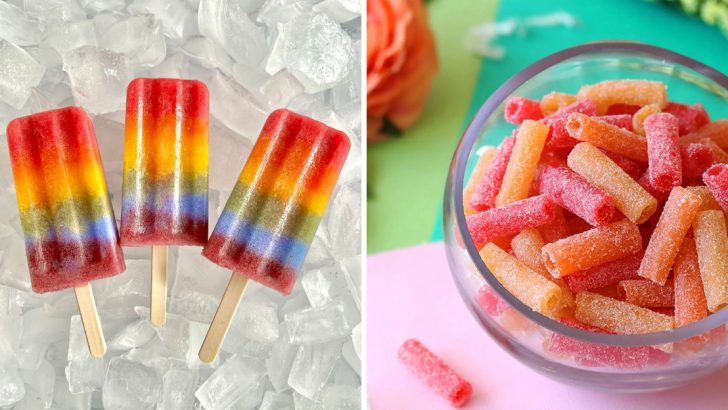Ever wonder what’s really in those brightly colored treats you love? Many popular foods are little more than clever marketing wrapped around a whole lot of sugar and artificial coloring.
Food companies know that vibrant colors and sweet tastes hook us from childhood, while fancy packaging makes us believe we’re getting something special. Let’s pull back the curtain on 15 foods that might be more chemical experiment than actual nutrition.
1. Cotton Candy
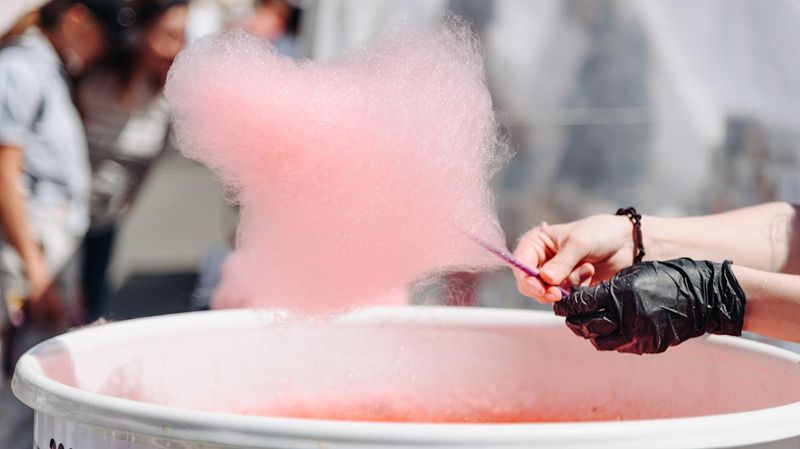
Fluffy clouds of pink and blue sweetness that dissolve instantly on your tongue – cotton candy is literally just sugar, air, and food coloring. Nothing else!
The carnival favorite contains zero nutritional value while delivering a massive sugar rush. A typical serving packs about 30 grams of pure sugar – that’s more than the daily recommended limit for kids.
2. Fruit Snacks
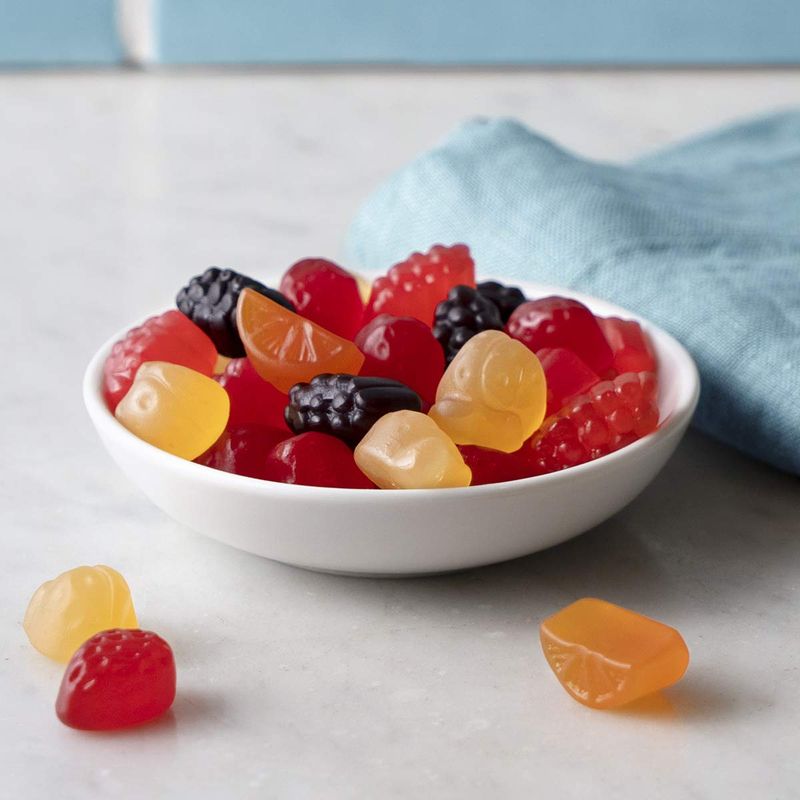
Shaped like tiny fruits but containing almost none! These gummy treats trick parents with pictures of strawberries and oranges on the package while delivering mostly corn syrup and artificial ingredients.
Read the ingredient list and you’ll find fruit juice usually appears after sugar, corn syrup, and modified corn starch. The vibrant colors come from artificial dyes like Red 40 and Blue 1 – certainly not from actual berries.
3. Sports Drinks
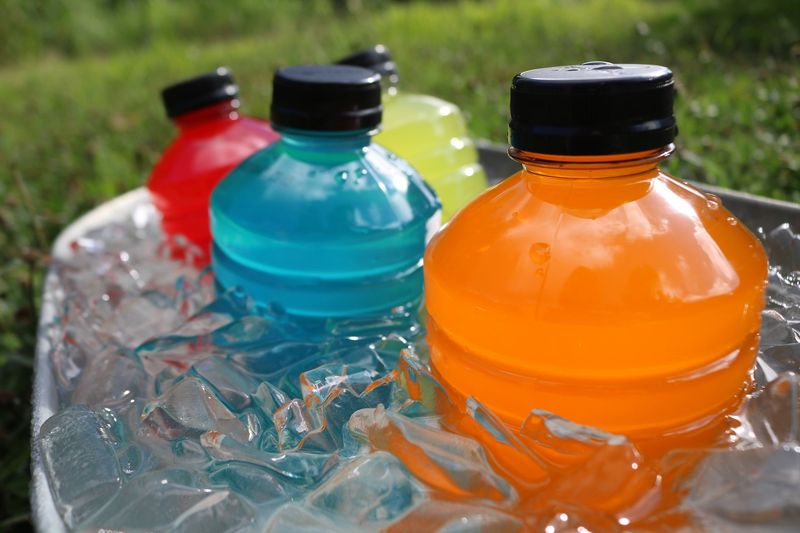
Neon blue, electric orange, and radioactive yellow – these drinks promise enhanced athletic performance but mostly deliver sugar water with food coloring. Unless you’re running marathons, you’re just drinking expensive sugar.
A typical 20-ounce bottle contains 34 grams of sugar – nearly as much as a candy bar! The electrolytes these drinks boast about could easily be obtained from a banana and some water.
4. Sugary Breakfast Cereals
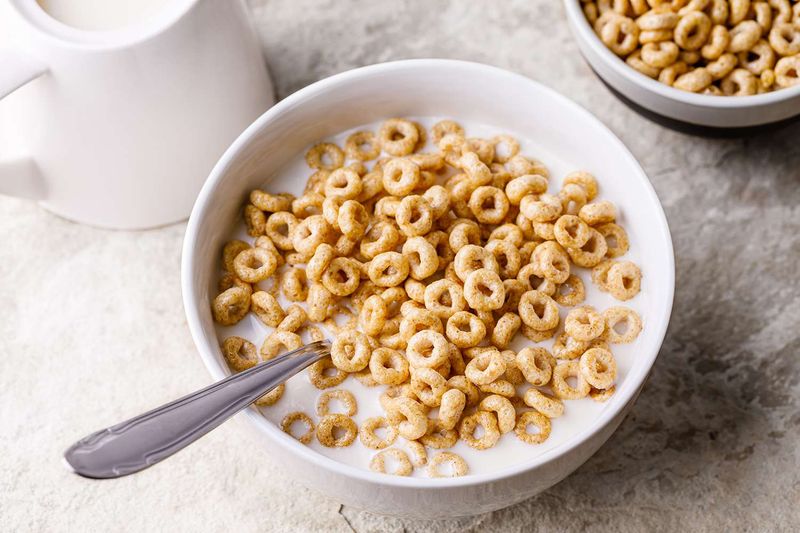
Cartoon characters lure kids while nutritional claims bamboozle parents. These breakfast staples often contain more sugar per serving than desserts! Some popular brands are over 40% sugar by weight.
Manufacturers strategically sprinkle in vitamins so they can plaster “fortified with essential nutrients” across boxes. The reality? Most of these cereals are processed grains coated in sugar, with artificial colors creating those enticing rainbow loops and marshmallow shapes.
5. Gummy Bears & Worms
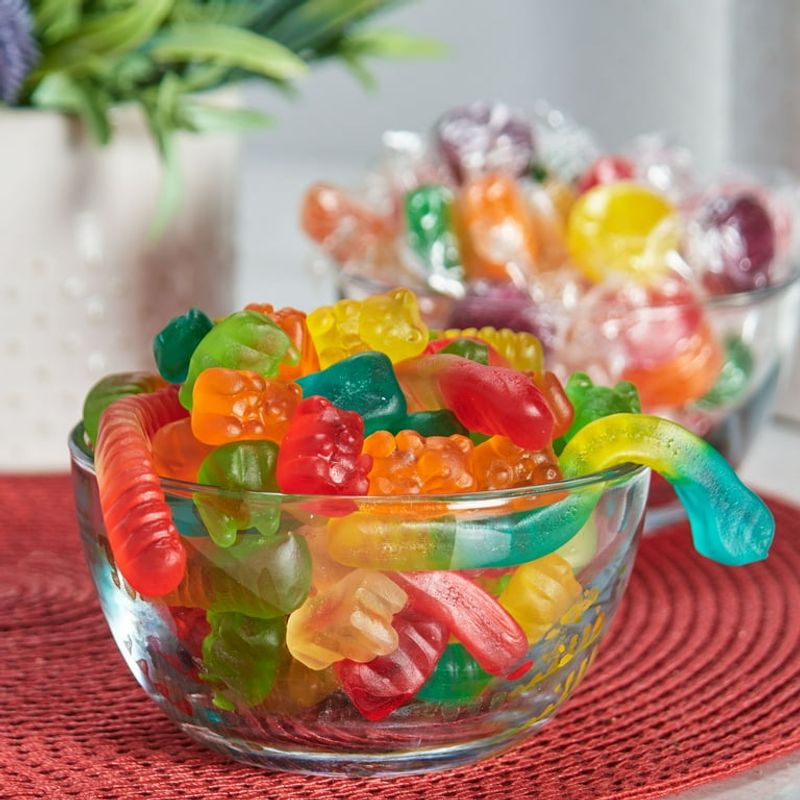
These jiggly little creatures are masterpieces of food science deception. Strip away the cute shapes and you’re left with gelatin, corn syrup, sugar, and a chemistry set of artificial colors.
Manufacturers know we eat with our eyes first, which is why they pump these treats full of dyes like Yellow 5 and Red 40. Some packages proudly claim “made with real fruit juice” when that juice is less than 1% of the product.
6. Powdered Drink Mixes
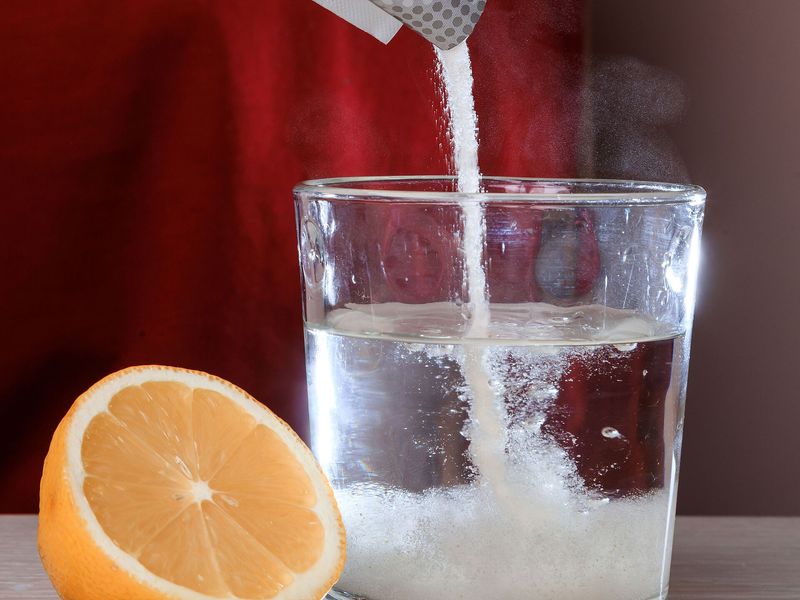
Remember stirring those vibrant powders into water and watching the transformation? Magic to a child, but pure food science trickery to informed adults.
These packets contain primarily citric acid, sugar, artificial flavors, and a rainbow of synthetic dyes. The fruit names and images on packaging suggest nutritional value where none exists. Most contain zero fruit – not even a drop!
7. Rainbow Ice Pops
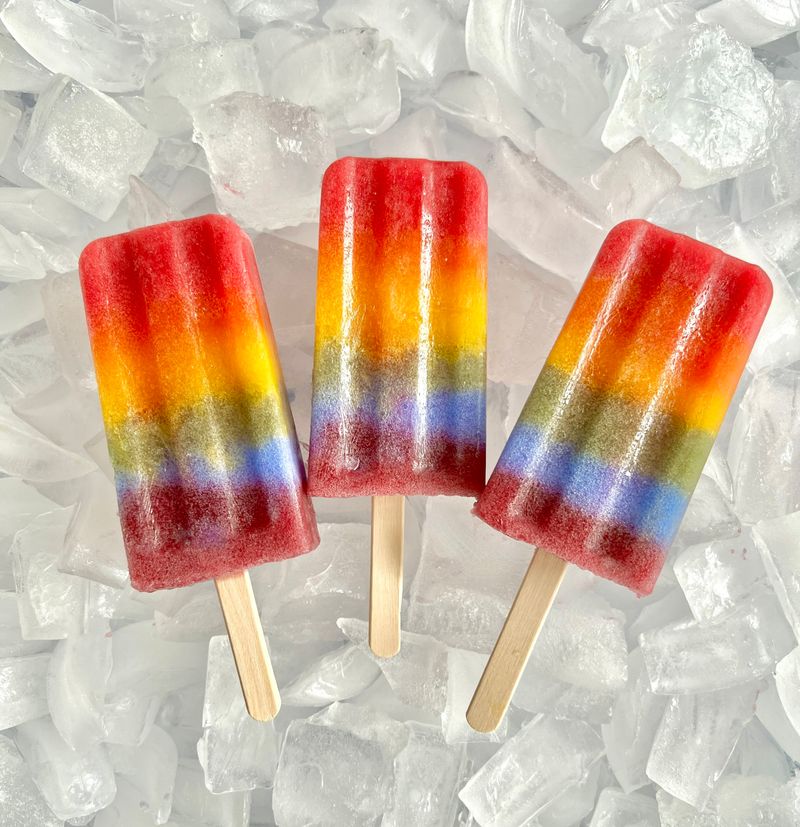
Those multicolored frozen treats that stain tongues and fingers? They’re essentially frozen sugar water with artificial colors and flavors. Nothing more, nothing less!
Manufacturers use the cheapest ingredients possible – water, high fructose corn syrup, and synthetic dyes – then charge premium prices for the experience. The bright colors create the illusion of different flavors when many actually taste nearly identical.
8. Candy-Coated Chocolates
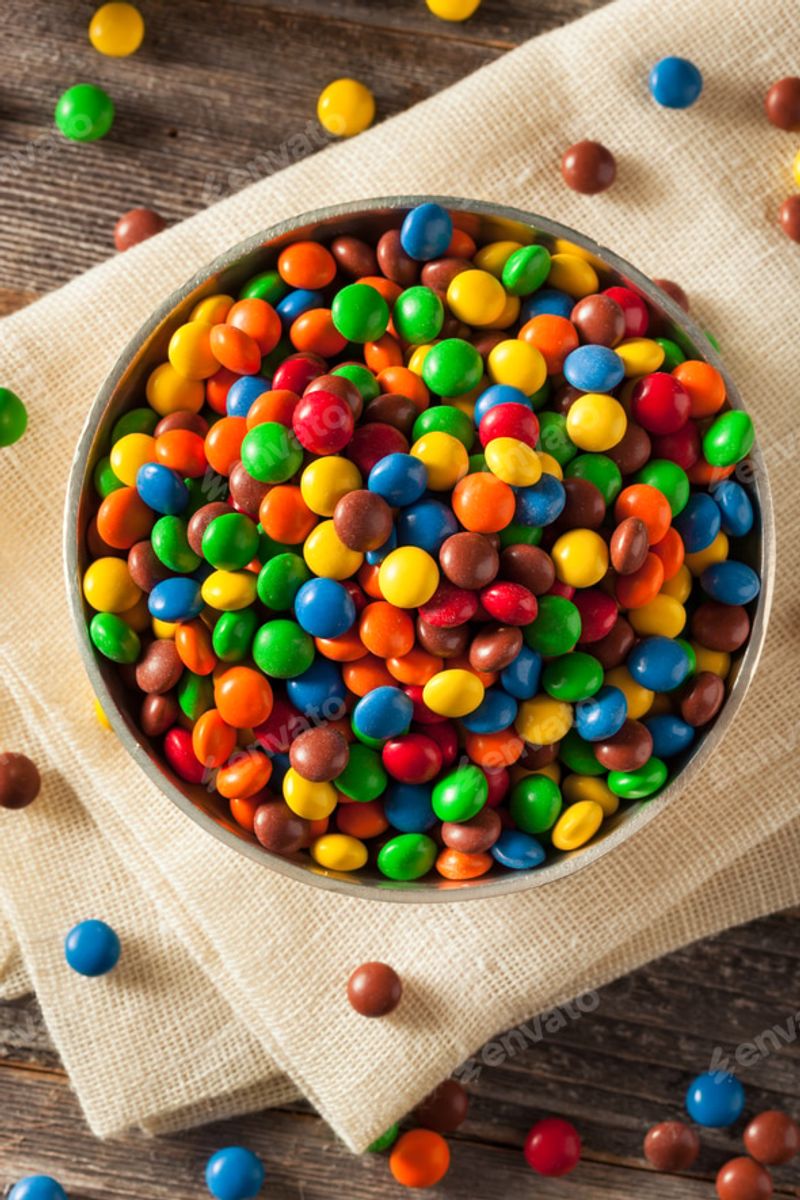
“Melts in your mouth, not in your hand” – a brilliant slogan hiding the fact that the colorful shell is pure food dye and sugar. These candies rely on bright colors to make them more appealing than plain chocolate.
The rainbow coating serves no purpose beyond visual appeal and brand recognition. Inside that shell is chocolate of questionable quality, often made with the minimum required cocoa to legally call it chocolate.
9. Jelly Beans
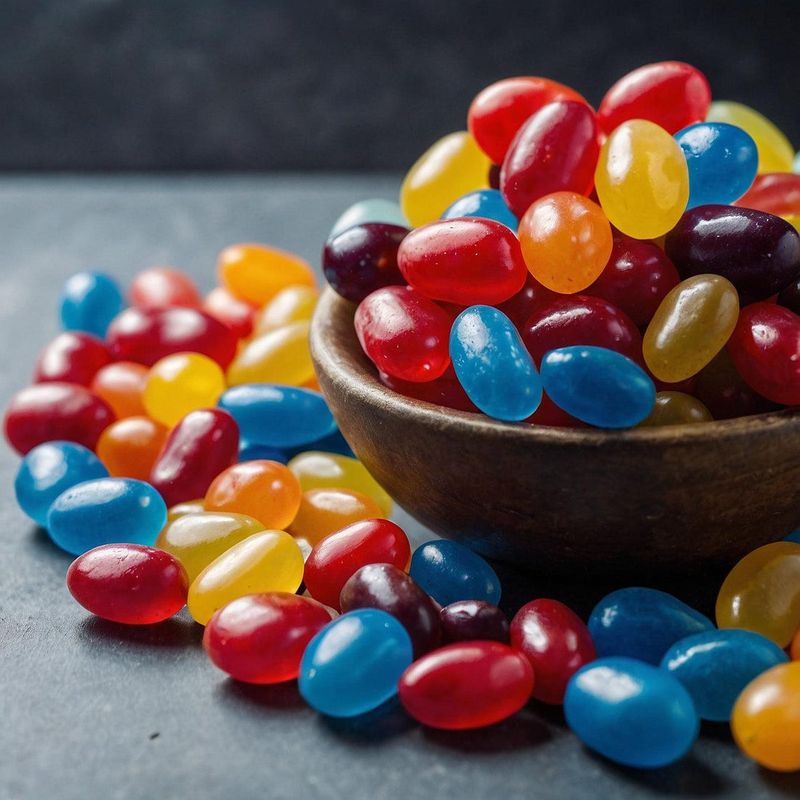
Shiny, jewel-toned beans that promise distinct flavors but deliver mostly sugar with artificial taste. A 100-gram serving packs a whopping 70 grams of sugar – nearly three times the daily recommended limit!
The flavor wizardry behind jelly beans is pure chemistry. “Cherry” flavor contains no cherries, “grape” never met a vineyard, and “green apple” has never seen an orchard. Instead, lab-created flavor compounds trick your brain.
10. Artificially Flavored Yogurts
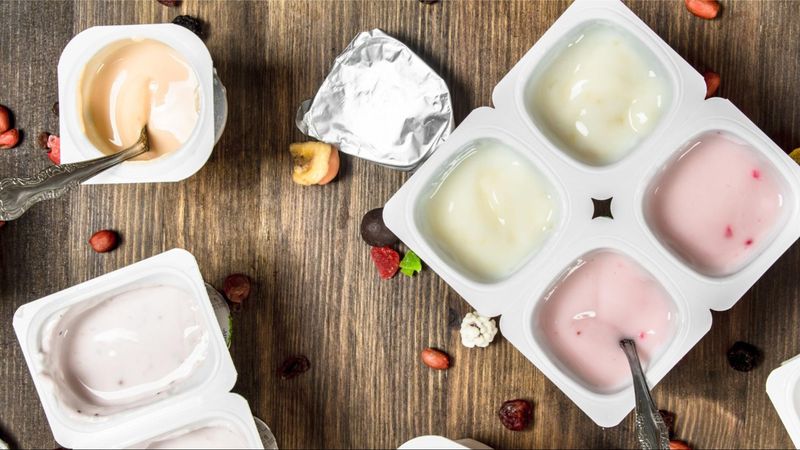
Yogurt should be a healthy food, but many flavored varieties contain more sugar than ice cream! The fruit on the package rarely matches what’s inside – often just a tiny amount of fruit concentrate for legal claims.
Manufacturers add thickeners, stabilizers, and artificial flavors to create the illusion of creaminess and fruit content. The vibrant colors come from dyes, not berries.
11. Sour Candy
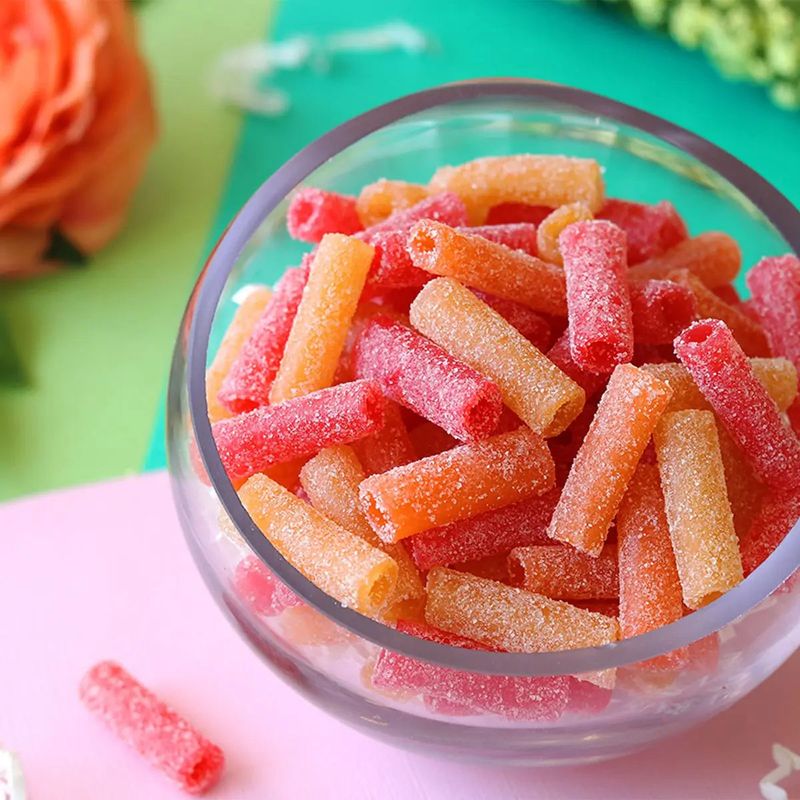
The mouth-puckering sensation that makes these candies so addictive? It’s citric acid powder – the same stuff used in cleaning products – coating sugar candy.
Nothing natural about that sour kick! Manufacturers have perfected the art of pain-pleasure confusion. The extreme sourness triggers your brain’s warning systems while the sugar rewards centers light up. This neurological confusion creates powerful cravings.
12. Frosted Toaster Pastries
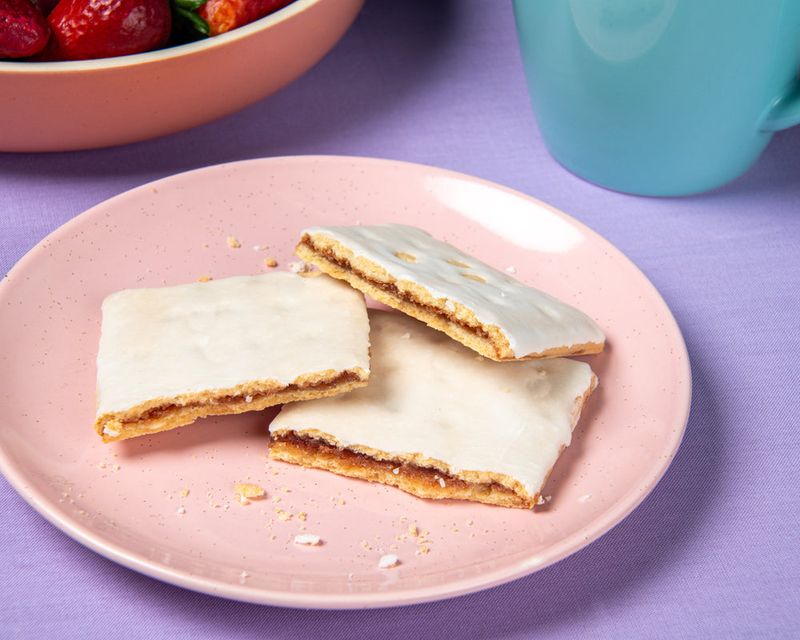
Marketed as convenient breakfast food but nutritionally closer to dessert. These pastries contain more sugar, oil, and preservatives than actual fruit or whole grains.
The “fruit filling” typically contains minimal real fruit – mostly corn syrup, sugar, and thickeners with food dyes providing the illusion of fruit content. One pastry can contain up to 16 grams of sugar, nearly half the recommended daily limit for children.
13. Bubblegum
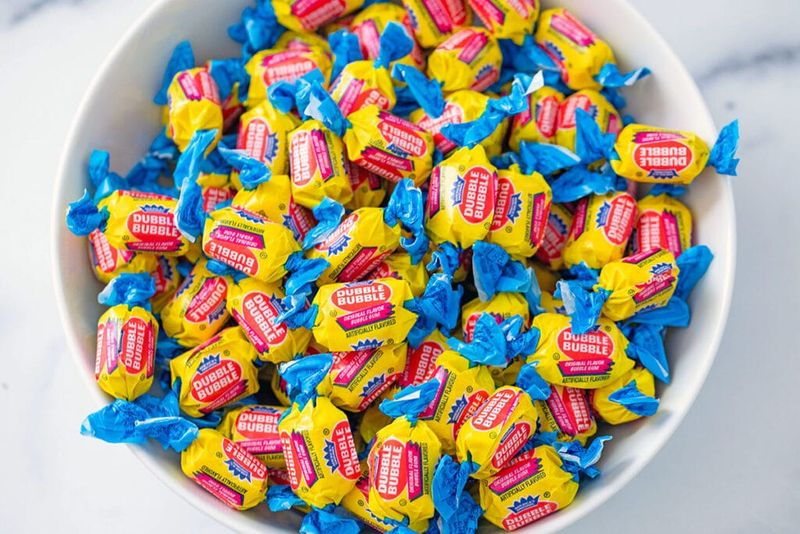
Chew on this: bubblegum flavor doesn’t exist in nature. That distinctive taste was created in a laboratory to sell colored sugar you can’t even swallow!
The bright pink (or blue) color comes from artificial dyes while the elastic texture comes from synthetic polymers – essentially plastic compounds. Most gums contain multiple artificial sweeteners alongside sugar to maintain sweetness during extended chewing.
14. Breakfast Pastry Bars
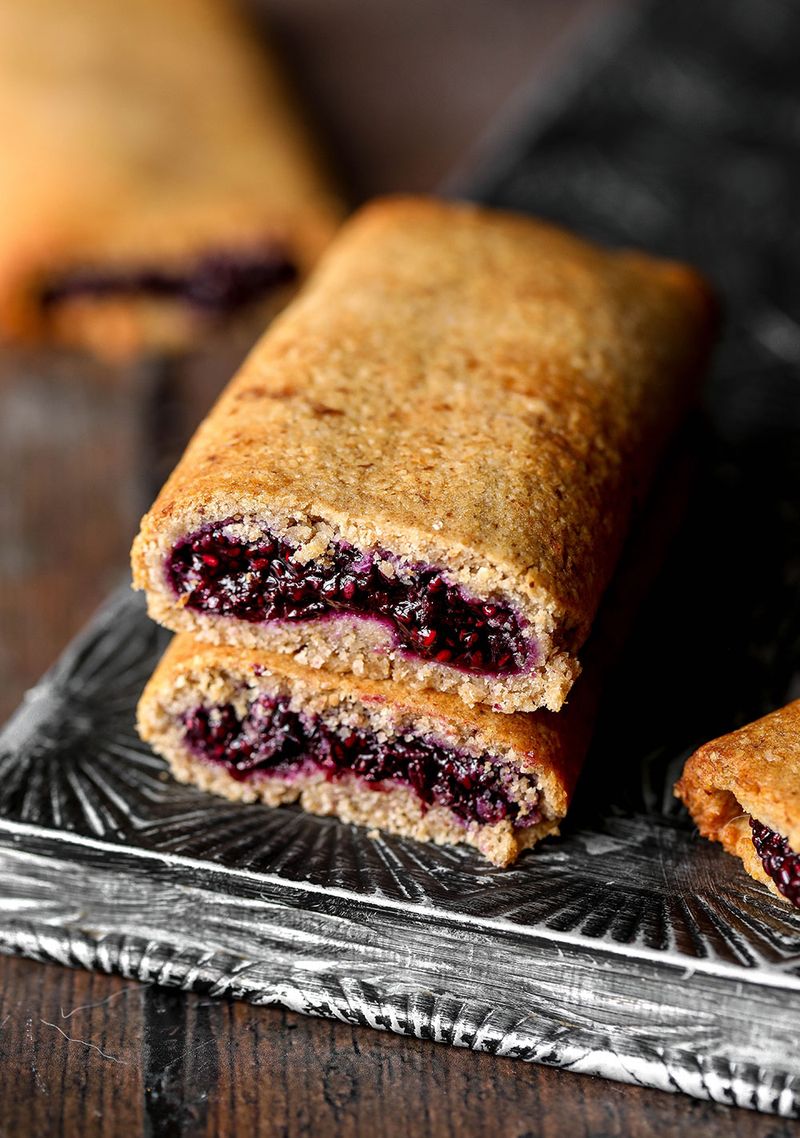
Wrapped in packaging suggesting wholesome nutrition, these bars are often nutritional disasters hiding behind health claims. “Made with real fruit” sounds impressive until you realize that fruit is mostly sugar anyway.
Many contain as much sugar as candy bars while using phrases like “whole grain” as marketing shields. The colorful fruit-like filling usually contains more corn syrup than actual fruit, with food dyes providing the convincing color.
15. Fruit-Flavored Sodas

Nothing quenches thirst quite like… 39 grams of sugar and artificial colors? These beverages contain zero fruit despite names and imagery suggesting otherwise.
The “cherry,” “grape,” and “orange” flavors come entirely from lab-created compounds. A typical 12-ounce can contains nearly 10 teaspoons of sugar – more than your daily recommended limit. The vibrant colors come from dyes like Red 40 and Yellow 5, not from anything found in nature.

